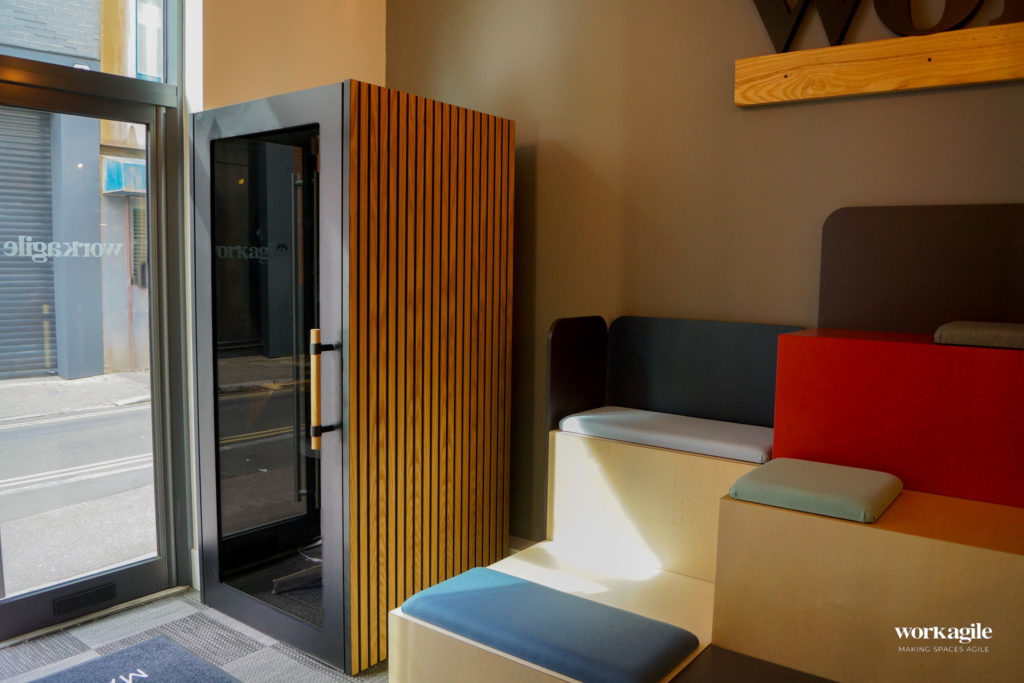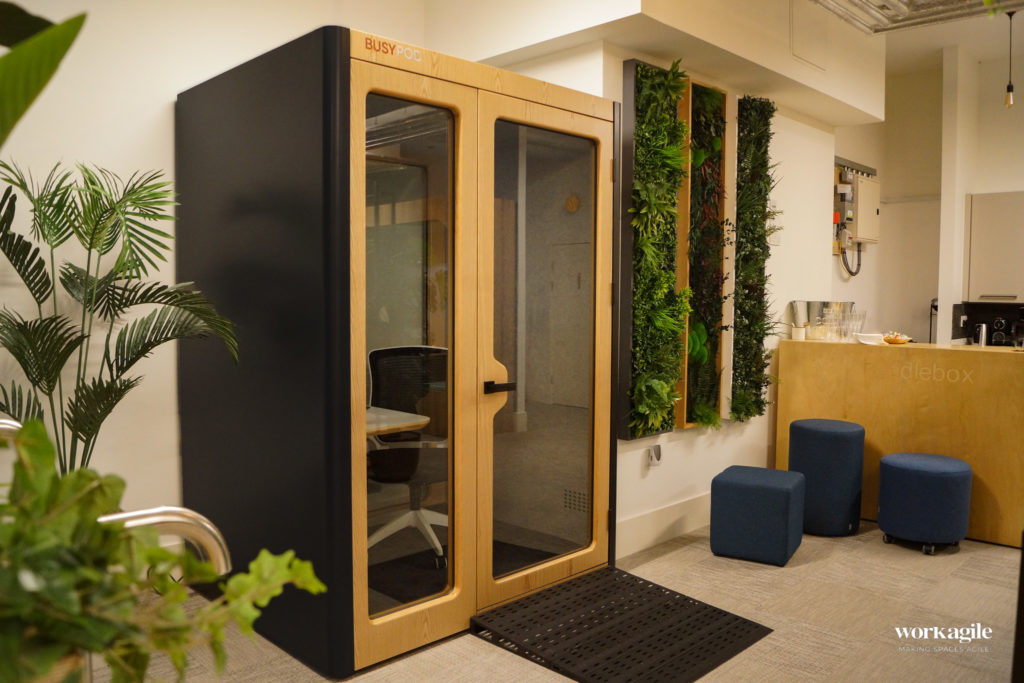As companies strive to create efficient and productive workspaces, the debate over whether to build traditional meeting rooms or install modular soundproof pods has become a pertinent topic. Both options have their advantages and disadvantages, ranging from cost-effectiveness and ease of installation to sustainability and adaptability. In this blog, we will compare the two options to help you make an informed decision based on your specific needs and preferences.
Built Meeting Rooms
Advantages:
Customisation: Traditional meeting rooms offer the freedom to tailor every aspect of the space according to your company’s unique needs. From layout to features, you have complete control over how the room is designed and utilised.
Size and Capacity: Building a room from scratch allows you to cater to larger groups. This is especially advantageous for presentations, training sessions, and gatherings where accommodating more people is crucial.
Aesthetics: Building meeting rooms allows you to create spaces that align seamlessly with your company’s branding, culture, and overall office design. You can choose pretty much any colors, materials, and furnishings, to best reflect your organisation’s identity.
Building Integration: Traditional meeting rooms are easily integrated with the building’s Mechanical & Electrical and Building Management Systems. This integration allows greater control over lighting, temperature, and audiovisual equipment, enhancing the meeting experience and aligning closer with the overall office infrastructure.
Disadvantages:
Higher Costs: Though some low spec meeting rooms may be affordable, constructing meeting rooms usually involves significant expenses. Costs include architectural planning, construction materials, labor, and potentially, wiring for technology integration. This might strain your budget, particularly for small to medium-sized businesses.
Installation Time and Disruption: The construction process can be time-consuming, leading to disruptions in regular office activities. This can impact productivity and cause inconvenience to employees. In some cases, staff may even have to vacate the office for the duration of the work, which may result in extra costs for making use of another office or coworking space.
Limited Flexibility: Once built, meeting rooms are challenging to modify without incurring additional costs and potential disruptions. This lack of adaptability might hinder your ability to adapt to evolving office needs.
Environmental Impact: Traditional construction processes often result in a higher environmental footprint due to resource consumption and waste generation, making it less sustainable in comparison.
Soundproofing Challenges: While soundproofing can be added to meeting rooms, achieving optimal acoustics may require expert input and additional expenses.
Modular Soundproof Pods
Advantages:
Fast and clean: the quick and clean installation process of soundproof pods offers a seamless retrofit solution for functioning offices, swiftly creating private meeting spaces without disrupting ongoing operations.
Cost-Effectiveness: Freestanding soundproof pods are designed for affordability. Their modular nature reduces costs associated with construction, labor, and planning. This is especially realised over time, as pods can be moved without incurring cost when adjusting office layouts, or when moving to a new office.
Ease of Installation: These pods are assembled quickly and with minimal disruption. Since they arrive pre-fabricated, you can have functional meeting spaces up and running in a fraction of the time required for traditional construction.
Flexibility and Adaptability: Modular pods are inherently flexible. You can easily reconfigure their placement within your office space, and if your team expands, adding more pods is a straightforward process. Plus, if you decide to relocate to a new office, the soundproof pods can come along too!
Sustainability: Many portable pod manufacturers prioritise sustainable materials and designs, contributing to a more eco-friendly workspace. Reduced waste and resource consumption align well with modern environmental concerns.
Optimal Soundproofing: Soundproof pods are specifically engineered to provide excellent sound isolation. This ensures that meetings remain confidential and productive, even in noisy office environments.
Disadvantages:
Aesthetic Constraints: While offering design options, portable pods might not achieve the same level of aesthetic alignment with your company’s branding and office theme as fully custom-built meeting rooms.
Size Limitations: Portable pods are generally designed to accommodate smaller to medium-sized groups. For larger presentations or company-wide gatherings, meeting rooms might be more suitable.
Limited Customisation: The extent to which you can customize portable soundproof pods is relatively constrained compared to the freedom traditional meeting rooms provide. For example, while many different lighting and wiring options can be installed in a built meeting room, only limited options will be available when selecting a modular pod.
Accessibility Challenges: Most soundproof pods are designed with compact dimensions and often feature a step-up entry. Without using additional ramp options, this design can pose challenges for individuals with limited mobility or those who rely on mobility aids like wheelchairs.
Choice: The abundance of companies offering a wide array of pod options can make the decision-making process challenging. With the market saturated by various features, designs, and functionalities, choosing the right soundproof pod that perfectly aligns with specific workspace needs requires careful evaluation and consideration.
Conclusion
In the end, the choice between building meeting rooms and installing portable soundproof pods depends on your priorities. If customisation options and size are crucial, traditional meeting rooms might align better with your needs. However, if you value cost-effectiveness, rapid implementation, flexibility, sustainability, and optimal soundproofing, portable soundproof pods provide a compelling solution.
Ultimately, both meeting rooms and portable soundproof pods serve the same core purpose of facilitating distraction-free and private discussions and collaboration. Therefore, carefully evaluate your organisation’s needs, future growth projections, and budget constraints to make an informed decision that best aligns with your workspace objectives.
Check out BusyPod, our premium quality soundproof pod range, or MiiBox, our affordable and elegant range of pods.
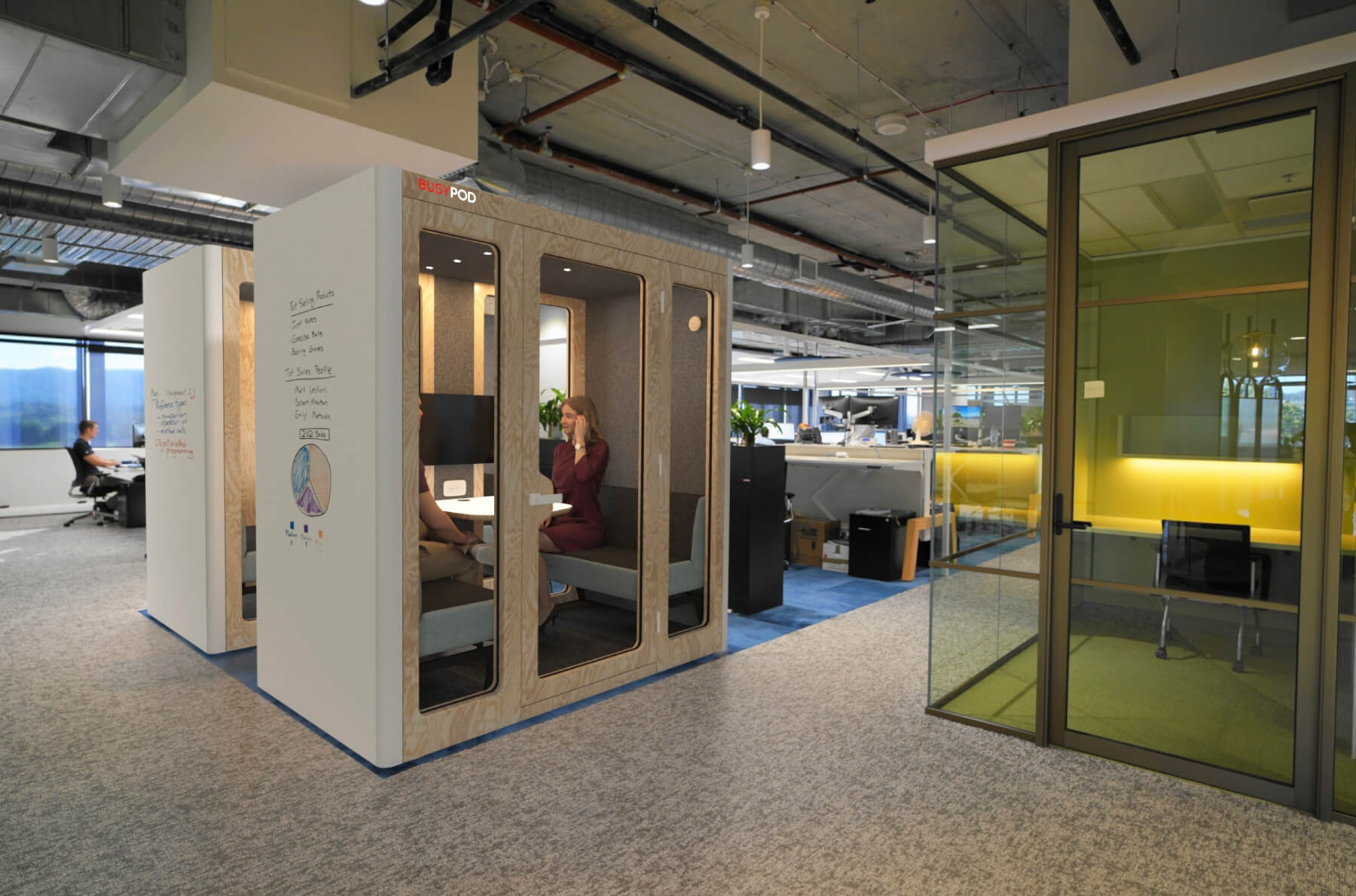
Soundproofing and Acoustics:
One of the primary purposes of both meeting rooms and soundproof pods is to provide a private and distraction-free environment for important discussions. While traditional meeting rooms can be designed with soundproofing measures, portable pods are specifically engineered for optimal acoustics. Their enclosed structure effectively blocks external noise, creating a superior space for effective communication.
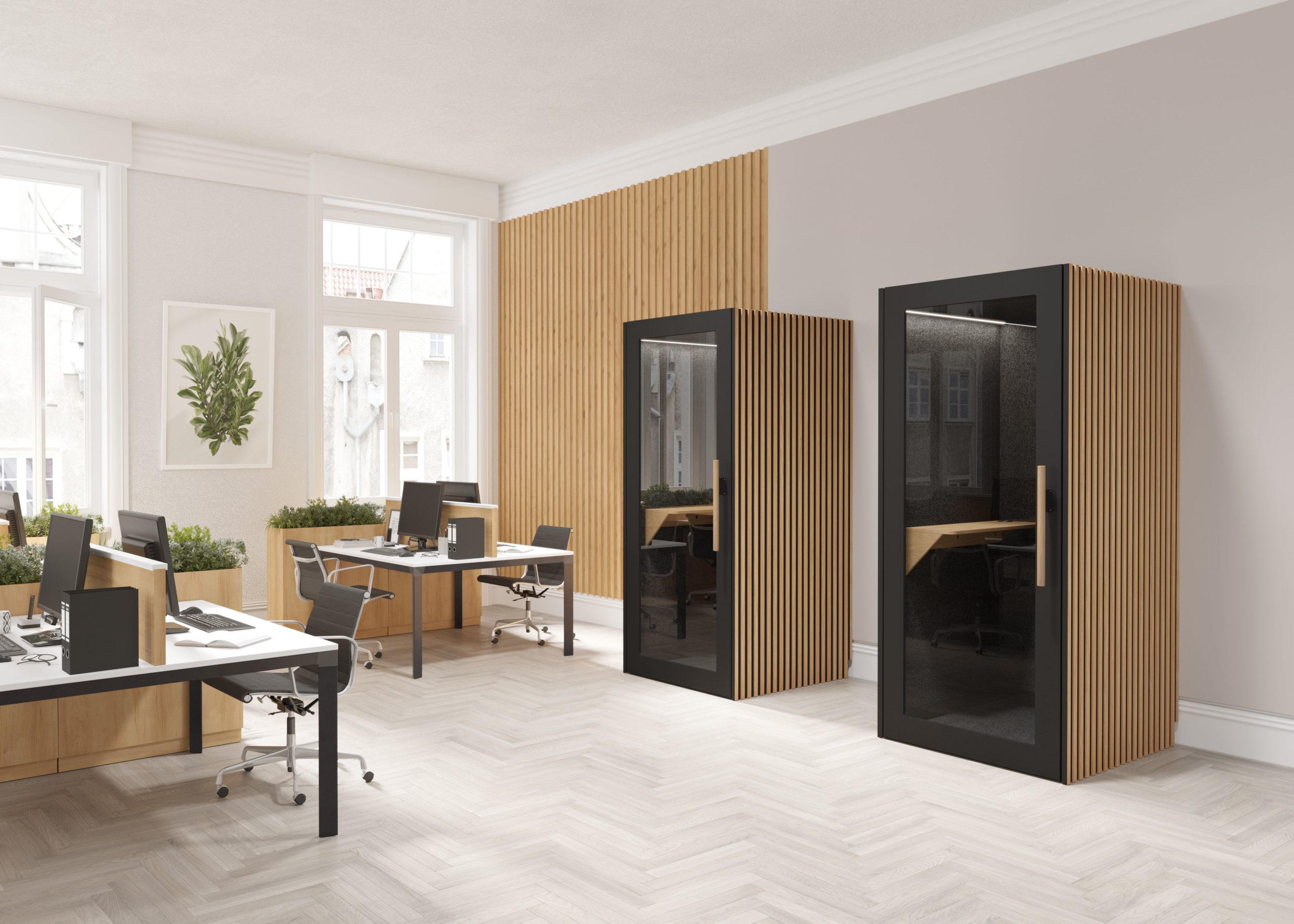
Ease of Installation:
When it comes to ease of installation, portable soundproof pods take the lead. These pods arrive pre-fabricated and can be quickly assembled within existing office spaces without the need for major renovations. In contrast, building meeting rooms requires time-consuming construction processes that may disrupt regular office operations. Portable pods, being modular, can also be easily moved or expanded as per the evolving needs of your organisation.
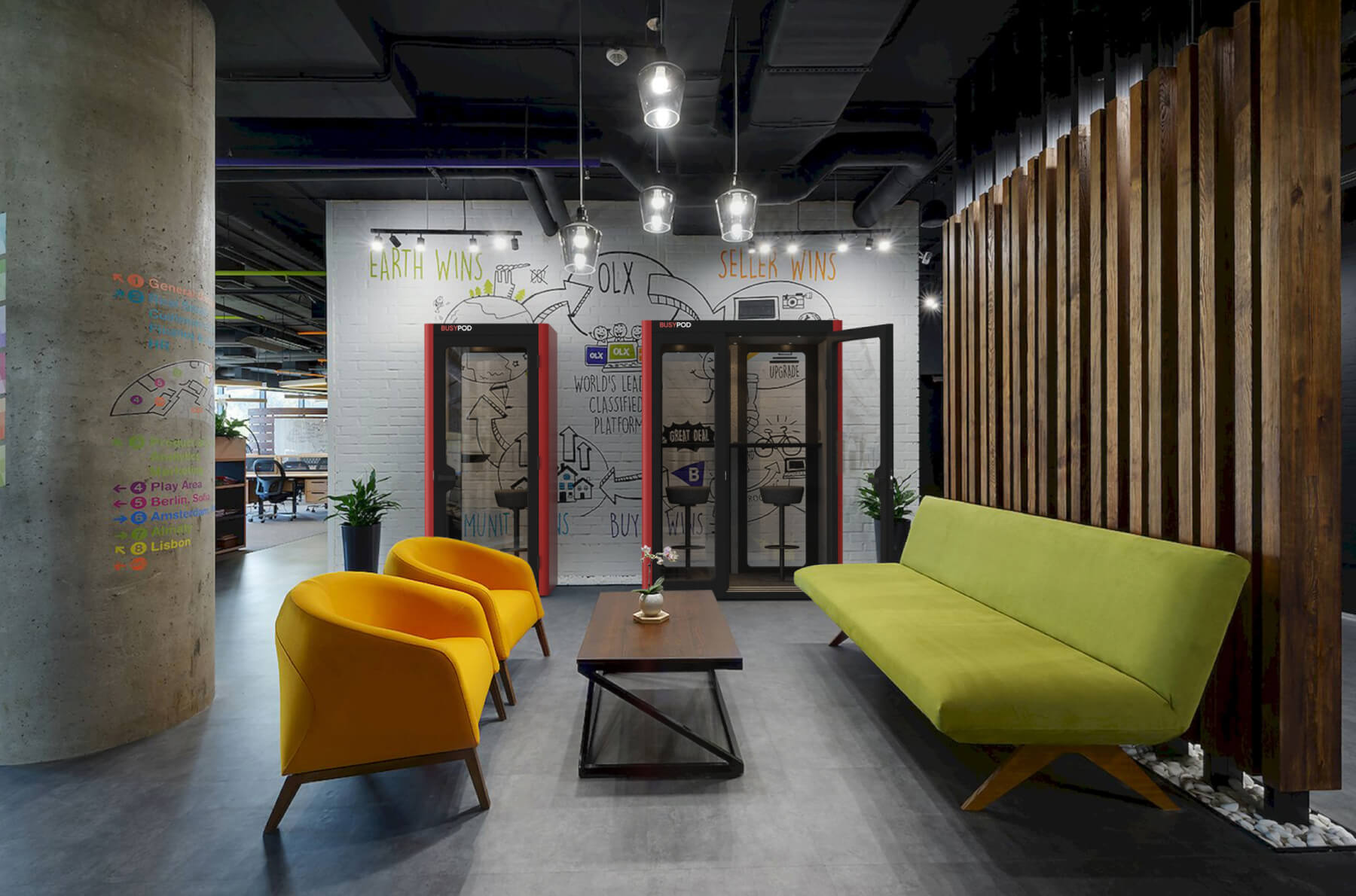
Cost-Effectiveness:
Building meeting rooms is undoubtedly more expensive than installing portable soundproof pods. Constructing a dedicated meeting room involves materials, labor costs, and architectural planning. On the other hand, soundproof pods are generally more affordable, with their modular designs and ease of assembly reducing installation costs significantly. Additionally, portable pods eliminate the need for permanent structural modifications, saving you money in the long run.
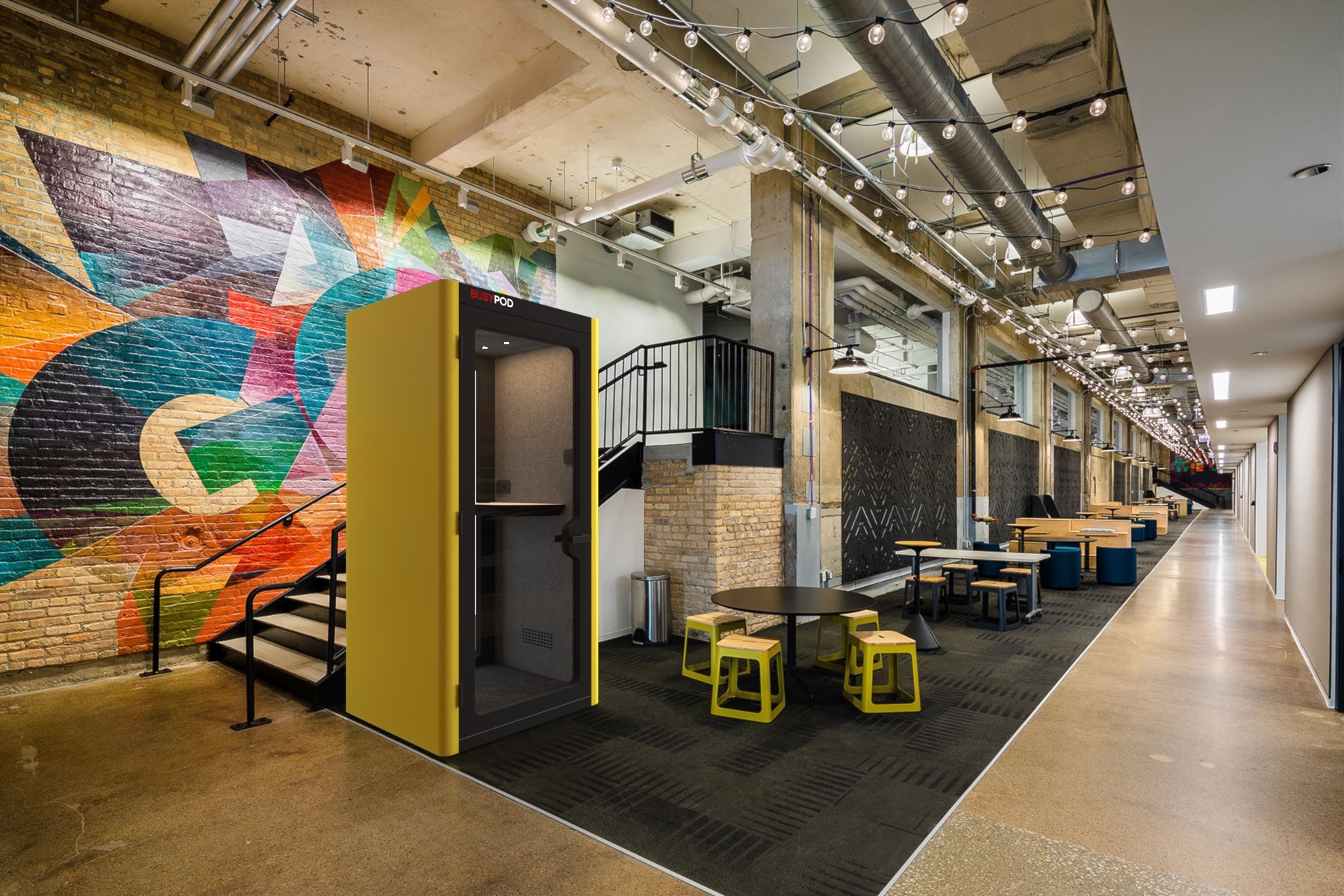
Aesthetics and Customisation:
Meeting rooms have the advantage of complete customisation. They can be designed to align with your company's branding and aesthetic preferences, blending seamlessly with the overall office design. Although portable soundproof pods often come in a variety of designs and colors, they might not offer the same level of aesthetic customisation as a purpose-built meeting room.
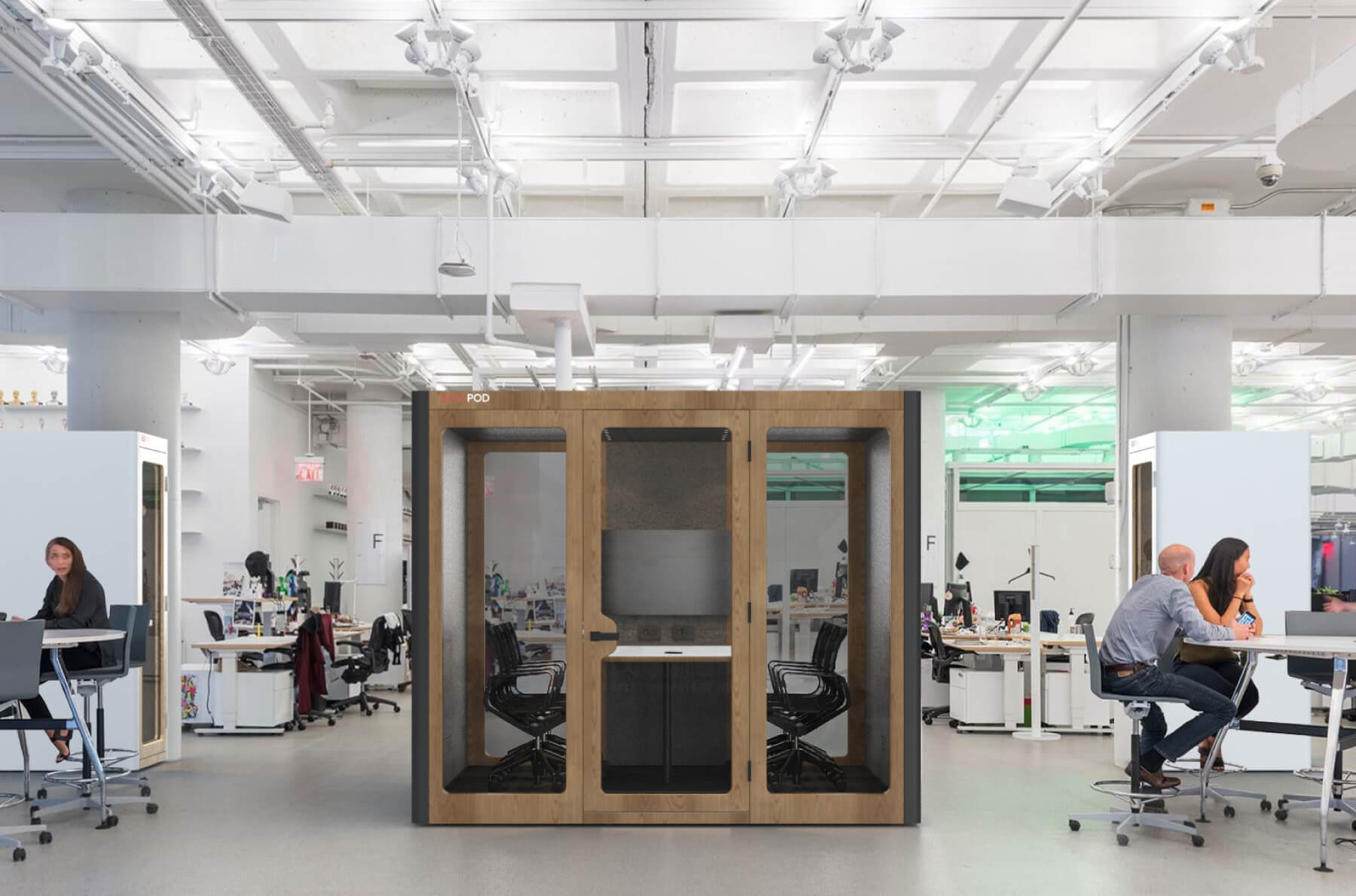
Flexibility and Adaptability:
Portable soundproof pods offer unparalleled flexibility. Their modular nature allows for easy reconfiguration or relocation within the workspace, accommodating changing needs and team dynamics. On the other hand, traditional meeting rooms are relatively static structures that may not adapt as effectively to evolving office layouts or spatial requirements.

Sustainability:
Sustainability is a crucial consideration in today's eco-conscious world. Meeting rooms, especially in larger corporate setups, require more resources and energy during construction, leading to a higher carbon footprint. Conversely, portable soundproof pods are often constructed using eco-friendly materials, and their energy-efficient design ensures minimal wastage and reduced environmental impact.
In conclusion, the choice between building meeting rooms and installing portable soundproof pods largely depends on your priorities and requirements. If cost-effectiveness, ease of installation, flexibility, sustainability, and superior soundproofing are essential factors for your workspace, then portable soundproof pods are the clear winner. However, if aesthetic customisation holds significant value, a traditional meeting room might be the more suitable option.
Ultimately, both meeting rooms and portable soundproof pods serve the same core purpose of facilitating distraction-free and private discussions and collaboration. Therefore, carefully evaluate your organisation’s needs, future growth projections, and budget constraints to make an informed decision that best aligns with your workspace objectives.
